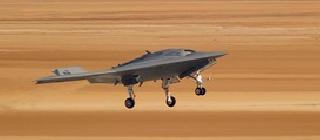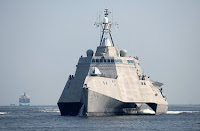Contract modifications were issued to Lockheed Martin Corporation and Austal USA March 17, under their respective Littoral Combat Ship (LCS) block buy contracts to add funding for construction of one fiscal year 2011 Littoral Combat Ship each. This is the second ship fully funded for each contractor under its previously-awarded, fixed-price incentive "block buy" contract for the design and construction of up to ten LCS Flight 0+ ships. The two block buy contracts provide for the acquisition of a total of up to 20 LCS from fiscal year 2010 through fiscal year 2015, subject to availability of appropriations. The amount of funds added under the block buy contract with Lockheed Martin Corporation for the fiscal year 2011 LCS ship is $376,621,375. The amount of funds added under the block buy contract with Austal USA for the fiscal year 2011 LCS ship is $368,592,125.
The ships will be built at Fincantieri Marinette Marine Corporation in Marinette, Wis., and Austal USA in Mobile, Ala., respectively.
The prices for the fiscal year 2011 ships were determined based on the competitive, LCS dual block buy contracts that were awarded Dec. 29, 2010.
"The awards represent the Navy's commitment to driving down costs in the littoral combat ship program," said Assistant Secretary of the Navy for Research, Development and Acquisition Sean Stackley. "We are executing the dual award strategy for these ships. Efforts to stabilize design, improve production planning, invest in shipbuilder improvements and leverage long-term vendor agreements all within the framework of a competitive fixed-price contract have returned this program to the level of affordability necessary for the Navy to move forward with construction at efficient rates in support of the 55-ship LCS requirement."
The additional funding obligated is for the seventh and eighth ships in the LCS class. USS Freedom (LCS 1) was delivered to the Navy September 2008 and is undergoing a continuous maintenance availability at its homeport of San Diego. USS Independence (LCS 2) was delivered to the Navy December 2009 and is currently undergoing test and trials in Mayport, Fla. Fort Worth (LCS 3) and Coronado (LCS 4) are under construction at Marinette Marine and Austal USA, respectively, and are expected to be delivered to the Navy in 2012.
LCS is needed to fill critical, urgent warfighting requirements gaps that exist today. LCS is required to establish and maintain U.S. Navy dominance in the littorals and sea lines of communication choke points around the world.




























